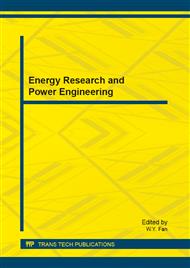p.3
p.8
p.13
p.18
p.23
p.28
p.33
p.38
Development of Super-Hard Cutter Material
Abstract:
Super-hard tool material is a main research point of mechanical engineering because of excellent performance. The development of technology for high-speed cutting process could enhance the machining quality and surface precision. It is a difficulty thing to get higher finished surface for traditional machining process. However, the super-hard cutter material could enhance the finished performance of tool material. For example, the wearing resistance, high stability of PCD (polycrystalline diamond) and PCBN (poly cubic boron nitride) can get more information for obtaining higher finished surface quality. The author introduces super-hard cutters materials (PCD and PCBN) development, and discusses several material properties. The features of materials used in different cutting fields are discussed.
Info:
Periodical:
Pages:
3-7
Citation:
Online since:
July 2013
Authors:
Keywords:
Price:
Сopyright:
© 2013 Trans Tech Publications Ltd. All Rights Reserved
Share:
Citation:


